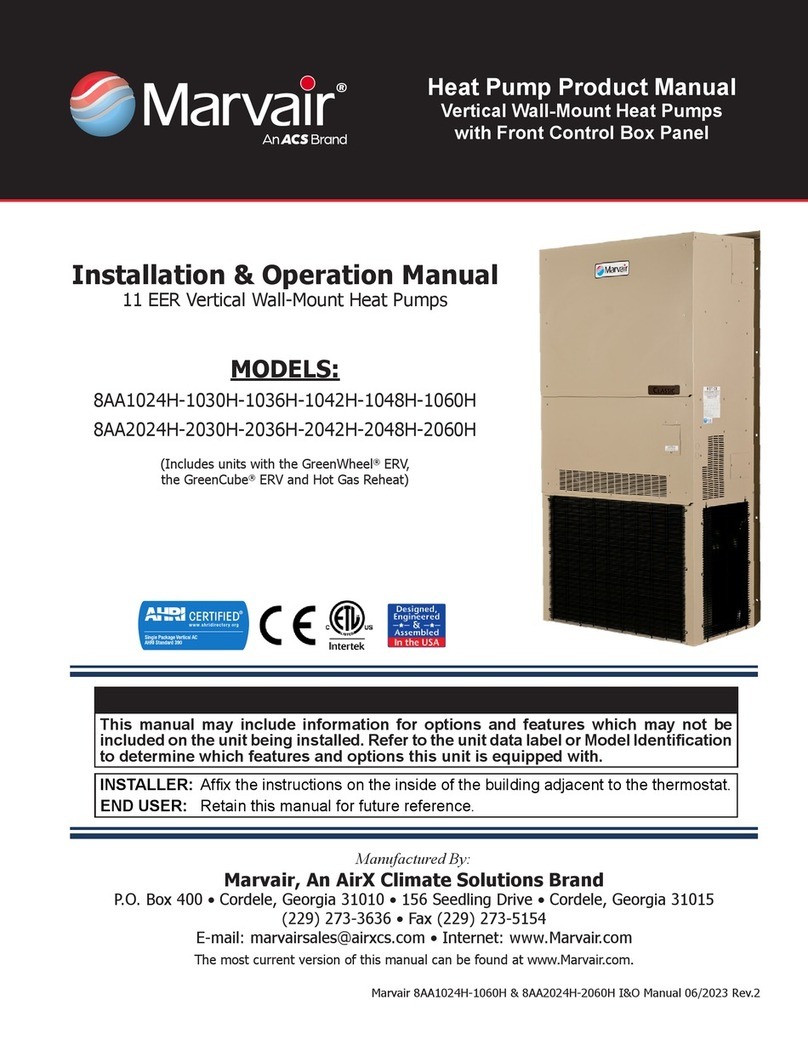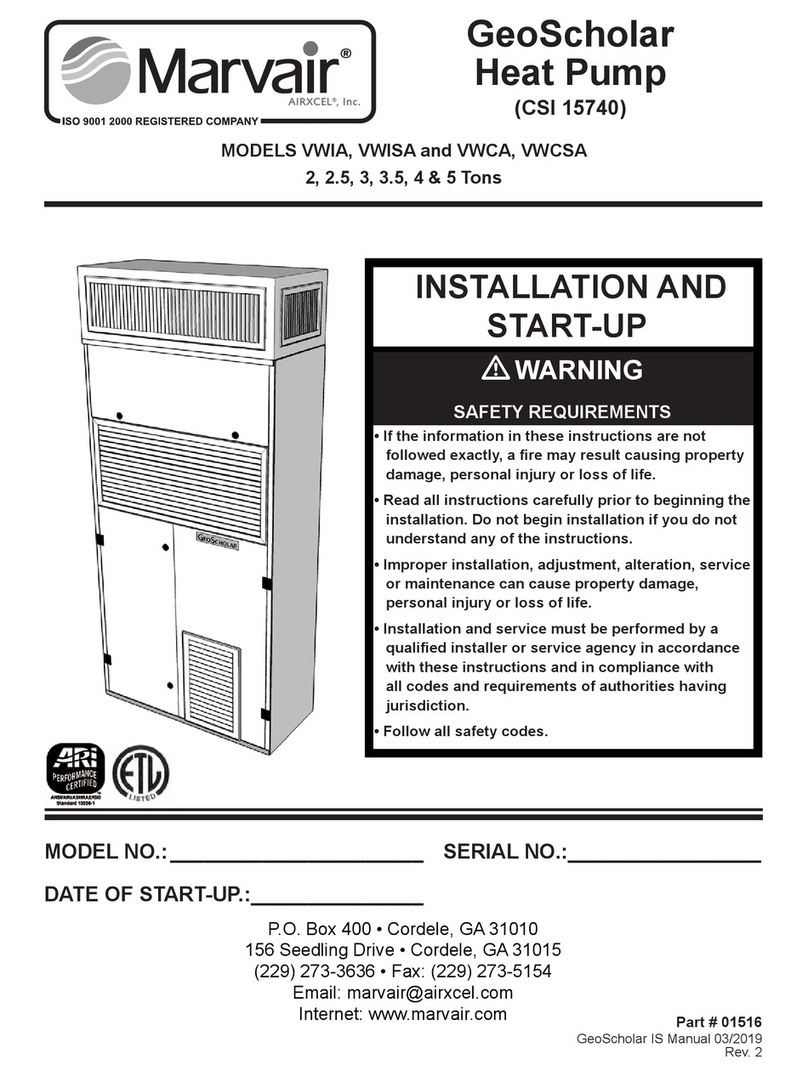
Marvair Scholar III™ VAISA I&S Manual 03/2019 Rev. 8 2
How To Use This Manual
This manual is intended to be a guide to the Marvair®Scholar III™ line of vertical packaged heat pumps and
air conditioners. This manual covers the installation and start-up of the Scholar III heat pumps and air conditioners,
models VAISA, with two stage compressors. It contains installation, troubleshooting, maintenance, warranty, and
application information. The information contained in this manual is to be used by the installer as a guide only. This
manual does not supersede or circumvent any applicable national or local codes.
If you are installing the Scholar III™ heat pump or air conditioner, rst read the entire manual and Appendices
for any of the options and accessories before beginning the installation. The Appendices describe the installation of
the base stand, the plenum, trim strips, wall brackets and outdoor louvers.
If a malfunction occurs, follow this troubleshooting sequence:
1. Make sure you understand how the Scholar III™ unit works.
2. Identify and correct installation errors.
3. If you are still unable to correct the problem, contact the Factory at 1-800-841-7854 for additional
assistance.
Please read the following “Important Safety Precautions” before beginning any work. Failure to follow
these rules may result in death, serious bodily harm, property damage and damage to the equipment.
Important SafetyPrecautions
1. USE CARE when LIFTING or TRANSPORTING equipment.
2. TRANSPORT the UNIT UPRIGHT. Laying it down on its side may cause oil to leave the compressor, re-
sulting in DAMAGE upon START-UP.
3. TURN ELECTRICAL POWER OFF AT THE breaker or fuse box BEFORE installing or working on the
equipment. LINE VOLTAGES ARE HAZARDOUS or LETHAL.
4. OBSERVE and COMPLY with ALL applicable PLUMBING, ELECTRICAL, and BUILDING CODES &
ordinances.
5. SERVICE may be performed ONLY by QUALIFIED and EXPERIENCED PERSONS.
* Wear safety goggles when servicing the refrigeration circuit
* Beware of hot surfaces on refrigerant circuit components
* Beware of sharp edges on sheet metal components
* Use care when reclaiming or adding refrigerant
6. Use COMMON SENSE - BE SAFETY CONSCIOUS
This is the safety alert symbol . When you see this symbol on the air conditioning unit and in the instruction
manuals be alert to the potential for personal injury. Understand the signal word DANGER, WARNING and
CAUTION. These words are used to identify levels of the seriousness of the hazard.
DANGER Failure to comply will result in death or severe personal injury and/or property damage.
WARNING Failure to comply could result in death or severe personal injury and/or property damage.
CAUTION Failure to comply could result in minor personal injury and/or property damage.
IMPORTANT Used to point out helpful info that will result in improved installation, reliability or
operation.
Specications subject to change without notice.
© 03/2019 Marvair®, Division of AIRXCEL™, Inc.


































